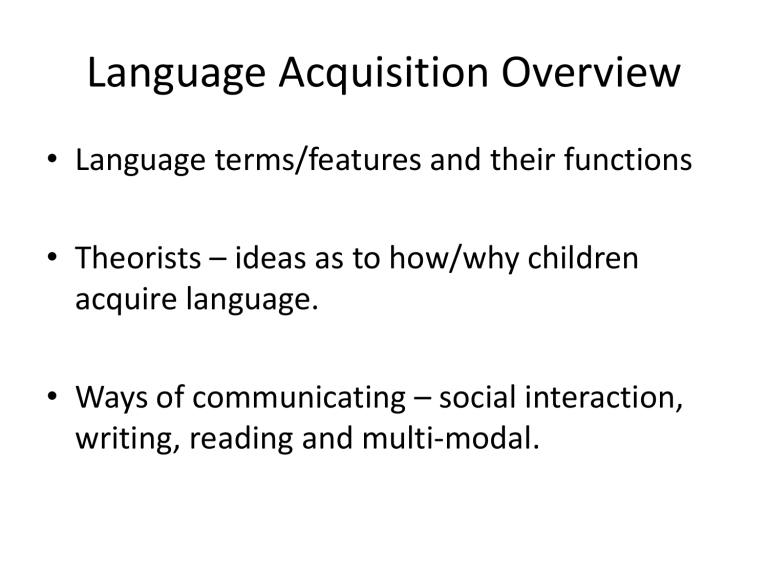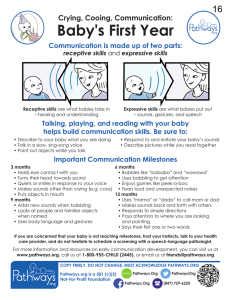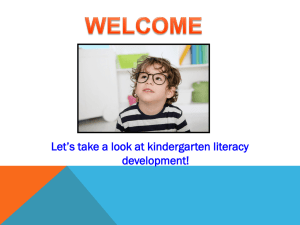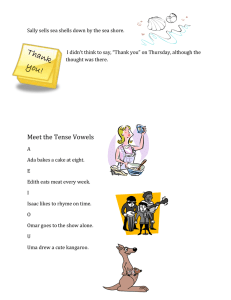
Language Acquisition Overview • Language terms/features and their functions • Theorists – ideas as to how/why children acquire language. • Ways of communicating – social interaction, writing, reading and multi-modal. Ordering Early Language Development In the womb – Fitzpatrick (2002) found that the heart rate of an unborn baby slowed when it heard its mother’s voice. At the cooing stage babies start to make a small range of sounds. Petitto and Holowka (2002) argue that babbling is the beginning of speech. Crying is one of the first vocal expressions a baby makes. It is more of an instinctive response to how it feels. Intonation patterns and the production of words – rhythms can resemble the speech patterns of adults which then lead to baby’s first words. Ordering Early Language Development 1) In the womb – Fitzpatrick (2002) found that the heart rate of an unborn baby slowed when it heard its mother’s voice. 3) At the cooing stage babies start to make a small range of sounds. 2) Crying is one of the first vocal chord expressions a baby makes. It is more of an instinctive response to how it feels. 4) Petitto and Holowka (2002) argue that babbling is the beginning of speech. 5) Intonation patterns and the production of words – rhythms can resemble the speech patterns of adults which then lead to baby’s first words. Learning Objective: Introduction to Language Acquisition: To be able to identify the techniques used in language development, and their functions. Pre-verbal Stage Main Techniques/Features Approximate Timings Vegetative (Vocal Chords) Reflex crying noises 0-4 months Cooing Stage Open-mouthed vowel sounds 3-6 months Repeated consonantvowel sounds and combinations of these 6-12 months Babbling sounds that seem to match actual word sounds – a grey area between preverbal and grammatical stages 9-12 months Babbling Stage Proto-Word (Intonation Stage/Production of words) KEY TERMS Comprehension Production Productive Vocabulary Look at the examples of children’s language. They are all taken from three children in the same family as they grow older. What do you observe about each utterance? How do they develop as the list progresses? What particular functions does their speech have? (page 107) Task 1. 2. Read the article ‘A baby’s babble leads to language’ and complete the questions below: What was the hypothesis for the experiment? What did the researchers conclude? http://www.msnbc.msn.com/id/3077446/ ‘A baby’s babble leads to language article’ Babbling Easy stopped sounds: where air is momentarily stopped from being released (‘p’) (aspiration) reduplication: where the same vowelconsonant combination is repeated (da da) variegated babbling: as above except that the vowel sound changes (da de) consonant cluster: where a number of consonants are combined, as in /fr/ Difficult friction sounds: where there is vibration whilst air is released (the ‘s’ in pleasure)






